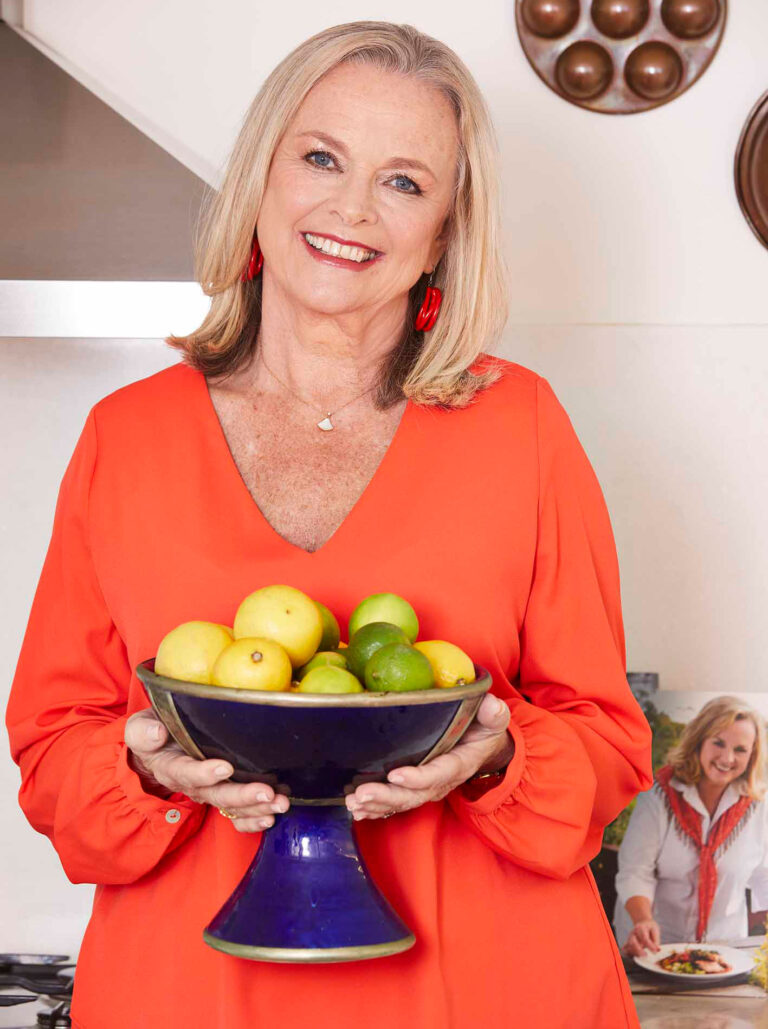Morocco is a colourful land and culture of contrasts with Modern Morocco not so much one country as a large family of distinct peoples, regional cultures and traditions influenced by Ancient Roman, Islamic, Arabic French and Spanish cultures as well as the indigenous Berber population.
Moroccan cuisine is influenced by Morocco’s interactions and exchanges with these other cultures and nations over the centuries. Moroccan cuisine is typically a mix of Berber, Arabic, Andalusian, and Mediterranean cuisines with French and sub-Saharan influences.
 Colourful spices in the Souk
Colourful spices in the SoukThere is no Moroccan cooking without spices. There is a hierarchy of spices, not the quantity that is important but their subtle use. Some spices are never used with others. Very often foreign cuisines are interpreted as spicy. There are specialists who know how to combine spices – 27 that comprise Ras el hanout. There are also dishes that call for just 2 spices. Not including pepper which is added with real subtlety.
Measured with the senses – they eye and the nose, not spoons. Love, patience and perseverance are important things to have. Try the recipe as it is written and then experiment. Spices present to enhance the foods with which they are cooked and not to mask a lack of substance. The products that go into the dish, the foods are what is really important. Spices shouldn’t crush but embellish these.
The best food is often eaten in Moroccan homes, with unwritten recipes being passed down from mother to daughter with family variations a closely guarded secret. However, if you know where to go you can also have a wonderful experience if you stay in lovely riads or ryads (the Arabian term for garden), as a riad is a traditional Moroccan house or palace with an interior garden or special restaurants.
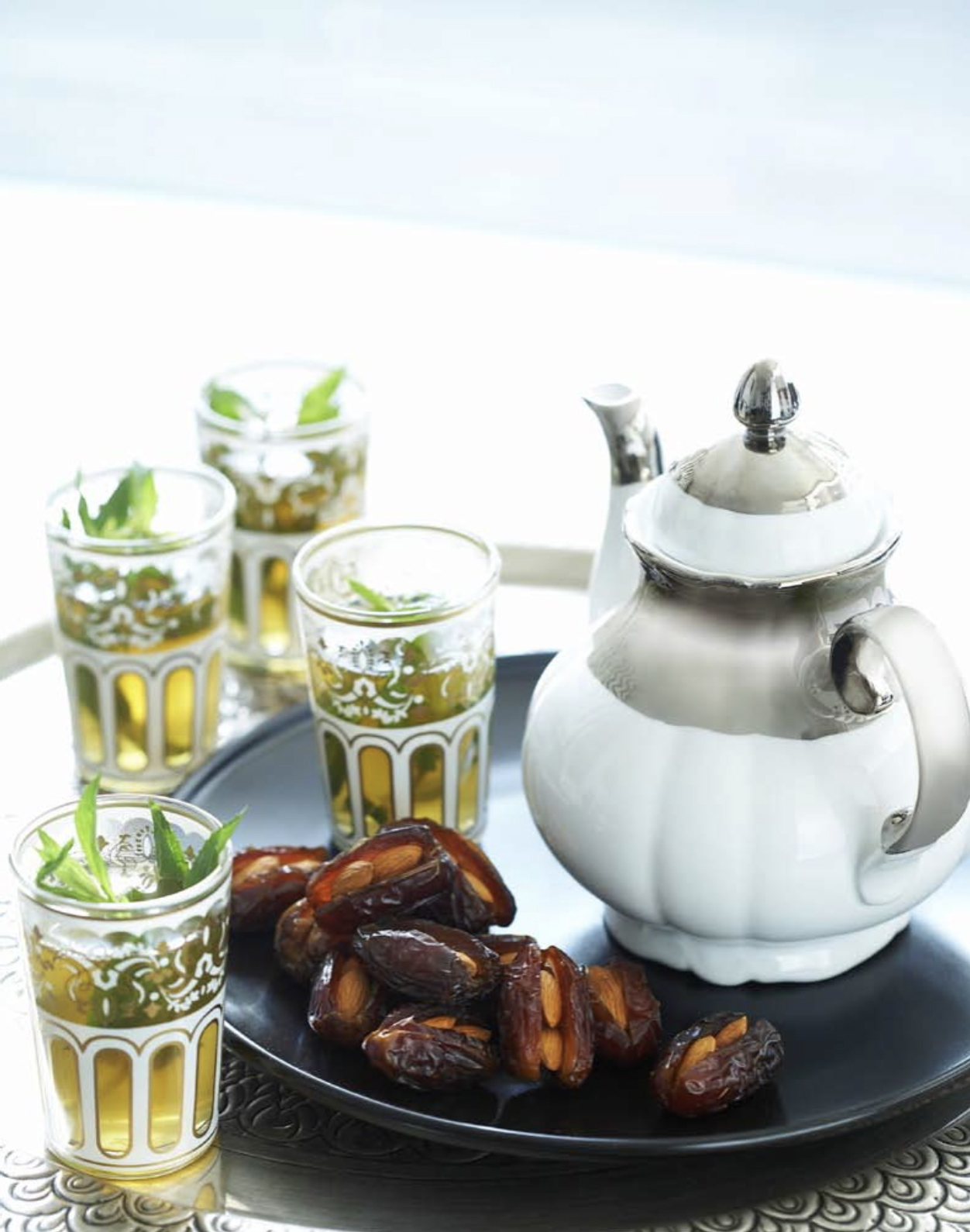 Mint tea and dates with traditional glasses
Mint tea and dates with traditional glassesGuests may be greeted with fresh dates and milk, fruit juice or mint tea. This national beverage, refreshing mint tea can be drunk at any time of day, it can be very sweet (though you can request it not to be), the mint in the glass rather than in the teapot with the mandatory Chinese green tea, always poured from a great height.
My favourite breakfast is a simple traditional m’smen crepe made from flour, water, a little yeast and local olive oil, dripping with local honey, with a glass of freshly squeezed orange juice and an expresso.
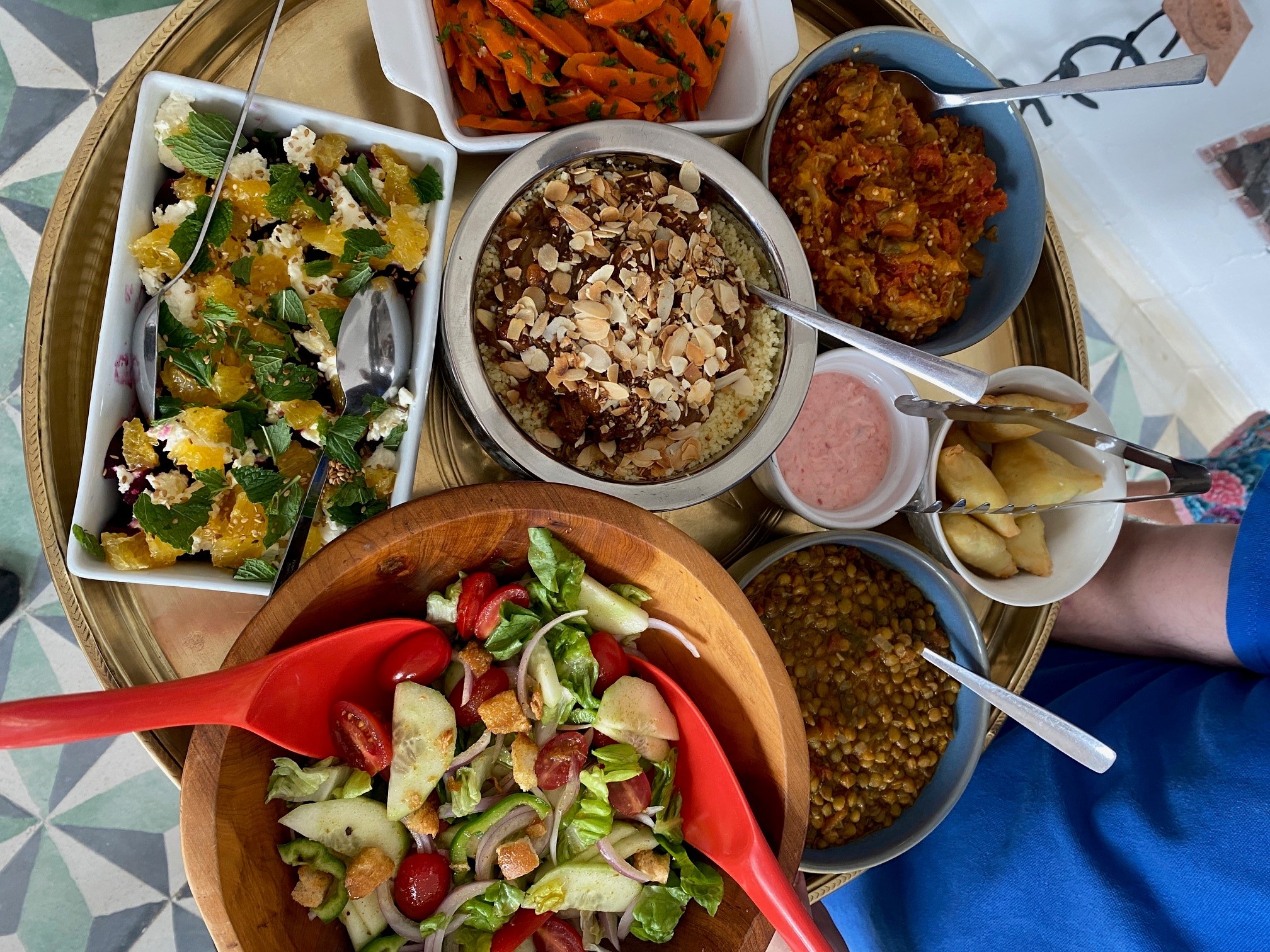 Moroccan Salads
Moroccan SaladsOther meals invariably begin with olives and cooked salads served in small bowls; their juices mopped up with the ever-present bread. Then perhaps bastilla, a huge round “pie” of oarka (filo-like) pastry filled with a golden blend of minced pigeon, sugar, almonds and spices; or mechoui, the Berber version of roast lamb, the entire animal roasted on a spit. Served whole with salt and cumin it is able to be eaten traditionally with the thumb and two forefingers of the right hand (any more indicates gluttony!).
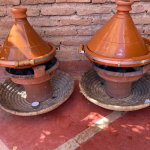

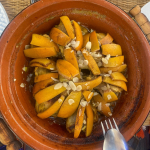
Tajines (the name of both the food and the flat earthenware dish with conical lid in which it is cooked) may be of whole chicken, preserved lemons and olives or lamb with dates. Couscous is piled high on serving platters, a well in the middle filled with a meat flavouring and the sides decorated with overcooked but silken vegetables. Fresh fruit precedes mint tea and an incredible array of sweet pastries. Eating is relaxed, taking place around low, round, carved tables reclining on lounges or cushions. Each diner takes from the communal plate, eating only from the portion directly in from of him or her and using the right hand only.
As with many cultures, bread is very important, the “staff of life”. There are many different types and eating bread in Morocco is very important for appreciation of food. Traditionally eaten in the fingers and salt that comes out of fingers when eat food (always remember to only use first 3 fingers of right hand), dip it in the juice of the salads. With tagines, you should be able to lift small piece of bread chicken or vegetable, swish in juices and eat with bread. Very much part of the enjoyment of the food. A fork does not replace your fingers.
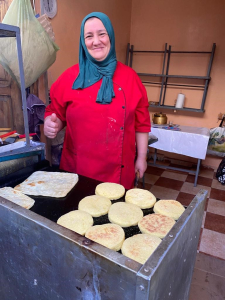
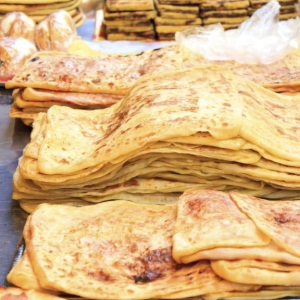
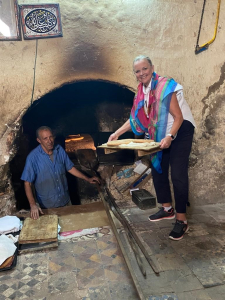
Morocco is perennially appealing. Perhaps it is the hospitality, or the tolerance, especially religious tolerance which has always been and continues to be shown towards others. Hospitality is a credo of all Moroccans. Therefore, the round table appears in both restaurants and private homes. This allows a flexible number to be accommodated without protocol. So unexpected guests can be entertained with ease, simply by adding another cushion. There is always enough food prepared for twice the number of guests, the visitor will always receive a spontaneous welcome. The tea ceremony, with its preparation of a tray with lots of glasses evokes this system of the open table. So, it may be served before, after or during the meal and to welcome visitors.
As Robert Carrier wrote “It has been said that Morocco yields her meaning only to those who take the time to draw water and make a pot of tea.”
Would you like to come to Morocco with me? Moroccan Culinary Tour with Lyndey Milan 27 April – 8 May.
Read Where to eat breakfast, lunch and dinner in Rabat, Morocco
You can see some of my Moroccan influenced recipes here.
